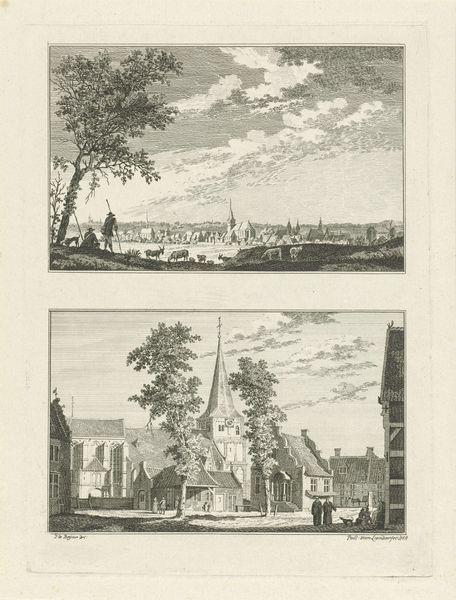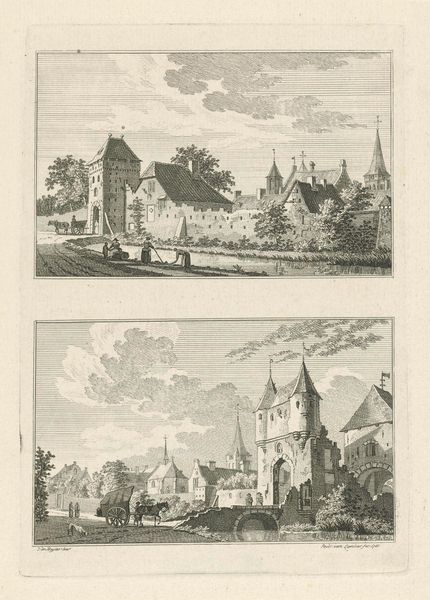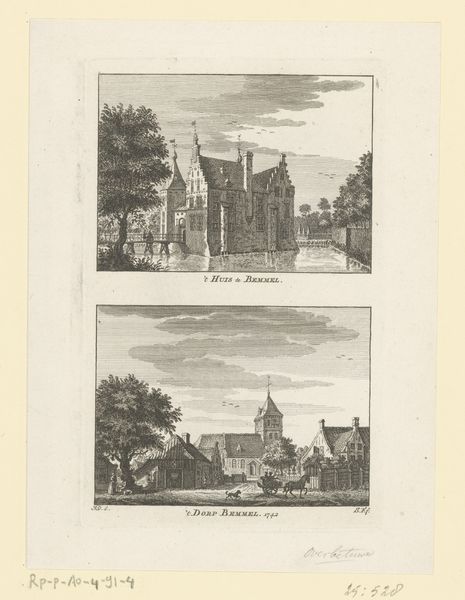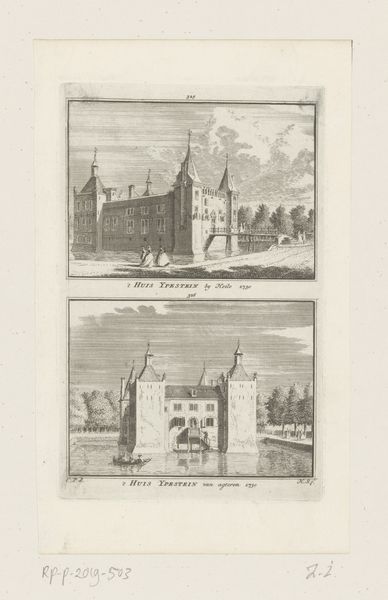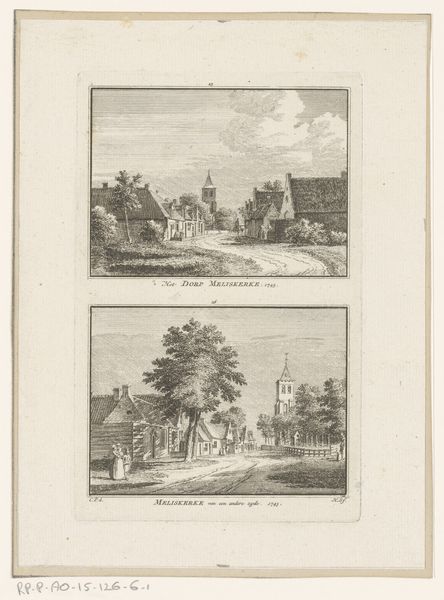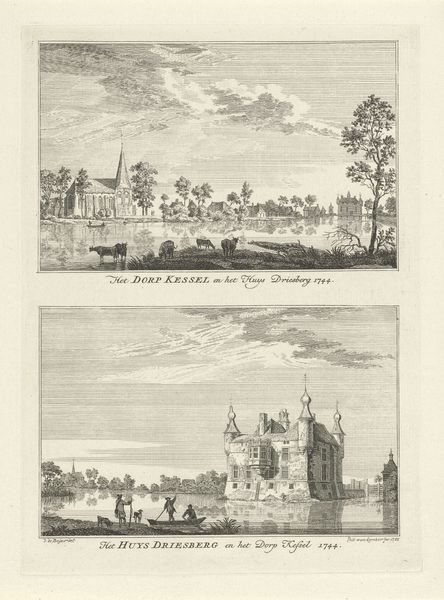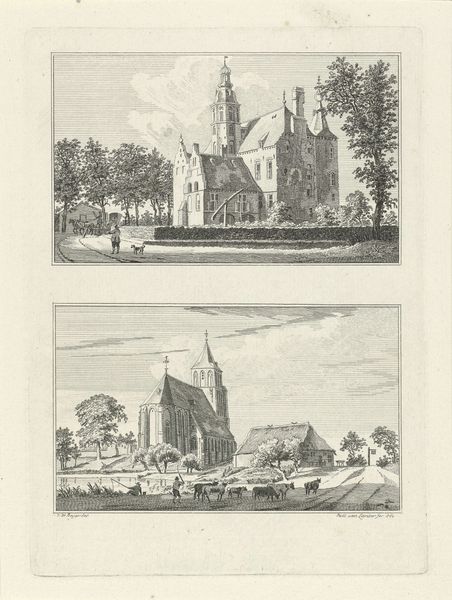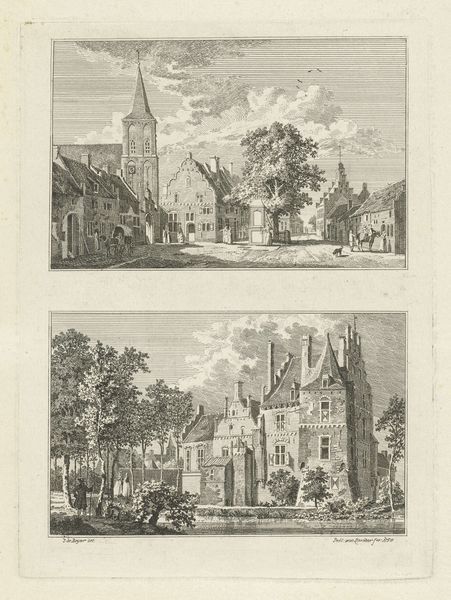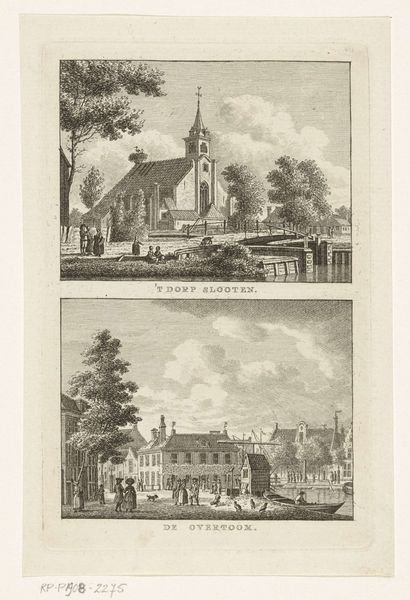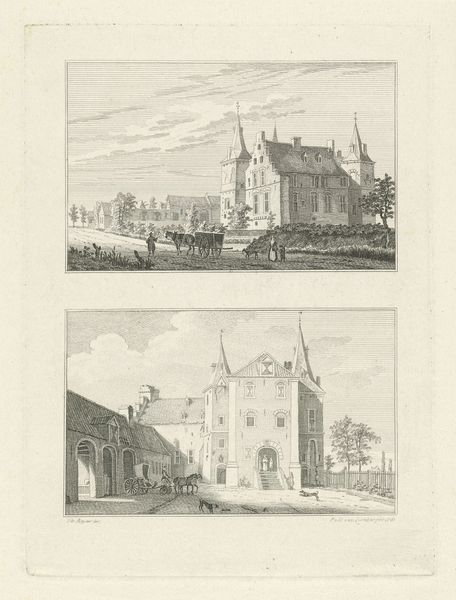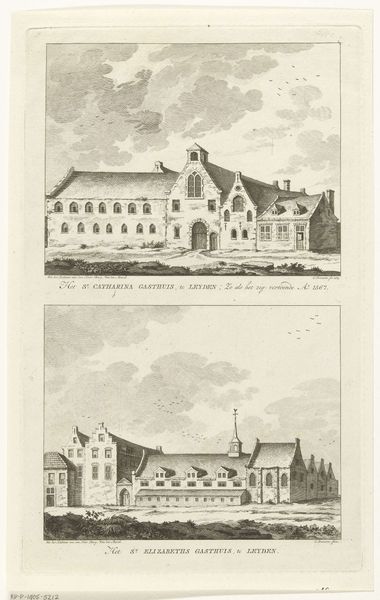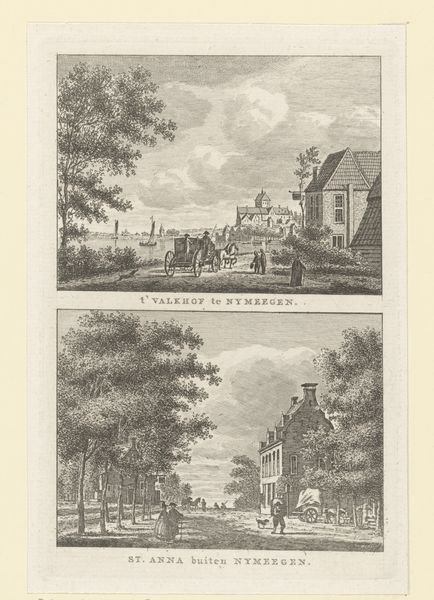
print, etching, engraving, architecture
#
baroque
# print
#
etching
#
landscape
#
engraving
#
architecture
Dimensions: height 205 mm, width 153 mm
Copyright: Rijks Museum: Open Domain
Curator: This is an etching and engraving from 1758 by Paulus van Liender, titled "Klooster Nieuwklooster, 1744." It depicts the Nieuwklooster monastery through two distinct views, both within the same frame. Editor: My immediate response is to the starkness. The lack of color emphasizes the meticulous details of the architectural forms and landscape, yet gives the images a feeling of distance and perhaps somber reflection. Curator: Indeed. Van Liender, while working almost a decade and a half after the stated date, provides us with not just an image, but a social record. Note how the precise lines of the engraving reveal not only the architecture but also the landscaping that communicates ideas about order and civility of the time. Editor: The composition does prompt thoughts of the production involved. Consider the copperplate itself: its mining, smelting, preparation; the tools used to meticulously carve the image—the engraver's labor, the societal value placed on recording these structures… Were these prints intended as widely available documentation, or a luxury item? Curator: That’s a crucial point. Printmaking made such imagery more accessible than paintings, impacting public perception of architecture and landscape. The lower view illustrates the structured existence within the monastery, where figures inhabit the space almost as design elements within the frame. Editor: I see it too. People seem included as material features in the design. And this Baroque attention to detail—all that work reproducing details for many sets of engravings. Considering craft production in Van Liender's day connects art and its relationship to the everyday worker and art consumer, I suppose. Curator: Exactly. Furthermore, such images would influence perceptions of these places for those who never saw them firsthand, establishing cultural and political perspectives through distribution of prints. Editor: The top image then stands in stark contrast; a very natural scene featuring a Shepard and his sheep. I’m interested in the economic status of the artist creating this rendering. Curator: Interesting. And by framing them together, Van Liender prompts us to reflect on the relationship between built spaces and natural landscapes, and how we might perceive the shifting cultural emphasis of those times. Editor: So, while seeming merely documentary at first glance, this print presents a narrative of material investment and the public reception of monuments both ecological and man-made at a specific moment in history. Curator: Precisely, a testament to the evolving social function of art.
Comments
No comments
Be the first to comment and join the conversation on the ultimate creative platform.
